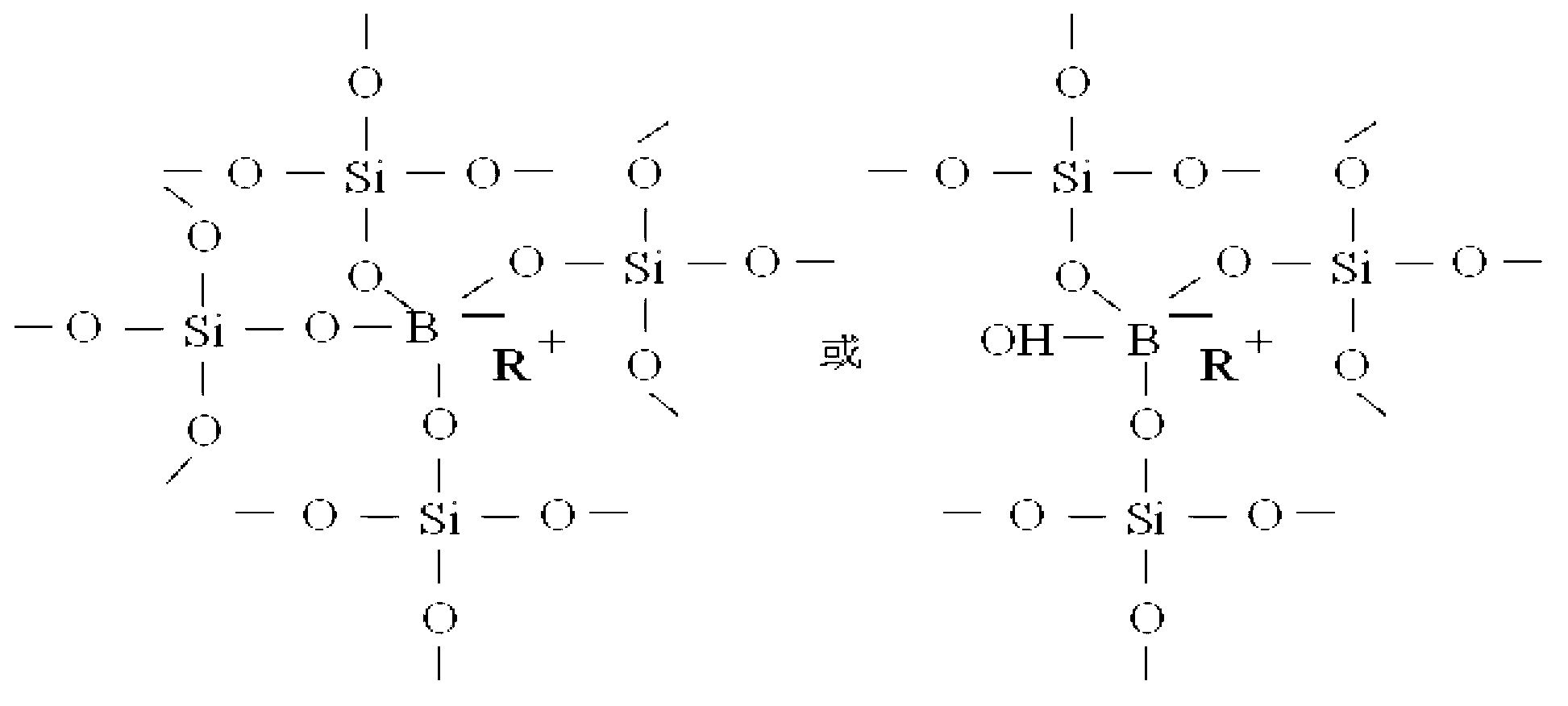Low-temperature microcrystalline foam glass and preparation method thereof
A technology of microcrystalline foam glass and low temperature, applied in glass manufacturing equipment, glass molding, manufacturing tools, etc., can solve the problems of consumption of foaming agent and energy, reduce foaming temperature, simple preparation method, and long service life Effect
- Summary
- Abstract
- Description
- Claims
- Application Information
AI Technical Summary
Problems solved by technology
Method used
Image
Examples
Embodiment 1
[0034]A series of experiments were carried out using liquid sodium silicate, boric acid and metakaolin with a modulus of M=3.0 and a solid content of 35%. The four formulas adopted are A, B, C and D respectively. Their specific raw material ratio is shown in the following table:
[0035]
[0036] Weigh the raw materials of each formula, and proceed as follows: firstly mix the weighed metakaolin with water glass and stir for 1 hour, then add boric acid and stir until a sol is formed, and age at room temperature for 1 day. Then this mixture was dried at 100°C to a moisture content of 20%. Weigh 250g into the mold, raise the temperature to 300°C at a rate of 10°C / min and keep it warm for 3 hours, and finally cool down to room temperature at a rate of 5°C / min to obtain a bulk density of 200kg / m 3 Low temperature microcrystalline foam glass. The low-temperature glass-ceramics obtained according to formulas A, B, C, and D were subjected to relevant performance tests, and the r...
Embodiment 2
[0041] According to the molar ratio: Na 2 O / SiO 2 = 0.2, SiO 2 / Al 2 o 3 = 3, B 2 o 3 / SiO 2 =0.1,H 2 O / Na 2 O=22 Weigh each raw material (sodium silicate, kaolin, silica fume and borax). First calcined kaolin at 800 degrees for three hours to obtain metakaolin, then mixed the weighed metakaolin and silica fume with water glass and stirred for 1 hour, then added borax and stirred until a sol was formed, and aged at room temperature for 1 day . Then this mixture was dried at 100°C to a moisture content of 20%. Weigh 250g and put it into the mold, heat up to 300°C at a rate of 10°C / min and keep it warm for 3 hours, and finally cool down to room temperature at a rate of 5°C / min to obtain a bulk density of 200kg / m 3 Low temperature microcrystalline foam glass. Its compressive strength is 1.5MPa, thermal conductivity is 0.060W / m·K, weight loss rate is 0.30%, and softening coefficient is 94.8%.
Embodiment 3
[0043] According to the molar ratio: Na 2 O / SiO 2 = 0.2, SiO 2 / Al 2 o 3 = 2, B 2 o 3 / SiO 2 =0.1,H 2 O / Na 2 O=22 Weigh each raw material (sodium silicate, fly ash and boric acid). Mix the weighed fly ash with water glass and stir for 1 hour, then add boric acid and stir until a sol is formed, and age at room temperature for 1 day. Then this mixture was dried at 100°C to a moisture content of 20%. Weigh 250g into the mold, raise the temperature to 300°C at a rate of 5°C / min and keep it warm for 3 hours, and finally cool down to room temperature at a rate of 5°C / min to obtain a bulk density of 200kg / m 3 Low temperature microcrystalline foam glass. Its compressive strength is 1.6Mpa, thermal conductivity is 0.060W / m·K, weight loss rate is 0.30%, and softening coefficient is 94.8%.
PUM
| Property | Measurement | Unit |
|---|---|---|
| Density | aaaaa | aaaaa |
| Compressive strength | aaaaa | aaaaa |
| Thermal conductivity | aaaaa | aaaaa |
Abstract
Description
Claims
Application Information
 Login to View More
Login to View More - Generate Ideas
- Intellectual Property
- Life Sciences
- Materials
- Tech Scout
- Unparalleled Data Quality
- Higher Quality Content
- 60% Fewer Hallucinations
Browse by: Latest US Patents, China's latest patents, Technical Efficacy Thesaurus, Application Domain, Technology Topic, Popular Technical Reports.
© 2025 PatSnap. All rights reserved.Legal|Privacy policy|Modern Slavery Act Transparency Statement|Sitemap|About US| Contact US: help@patsnap.com



